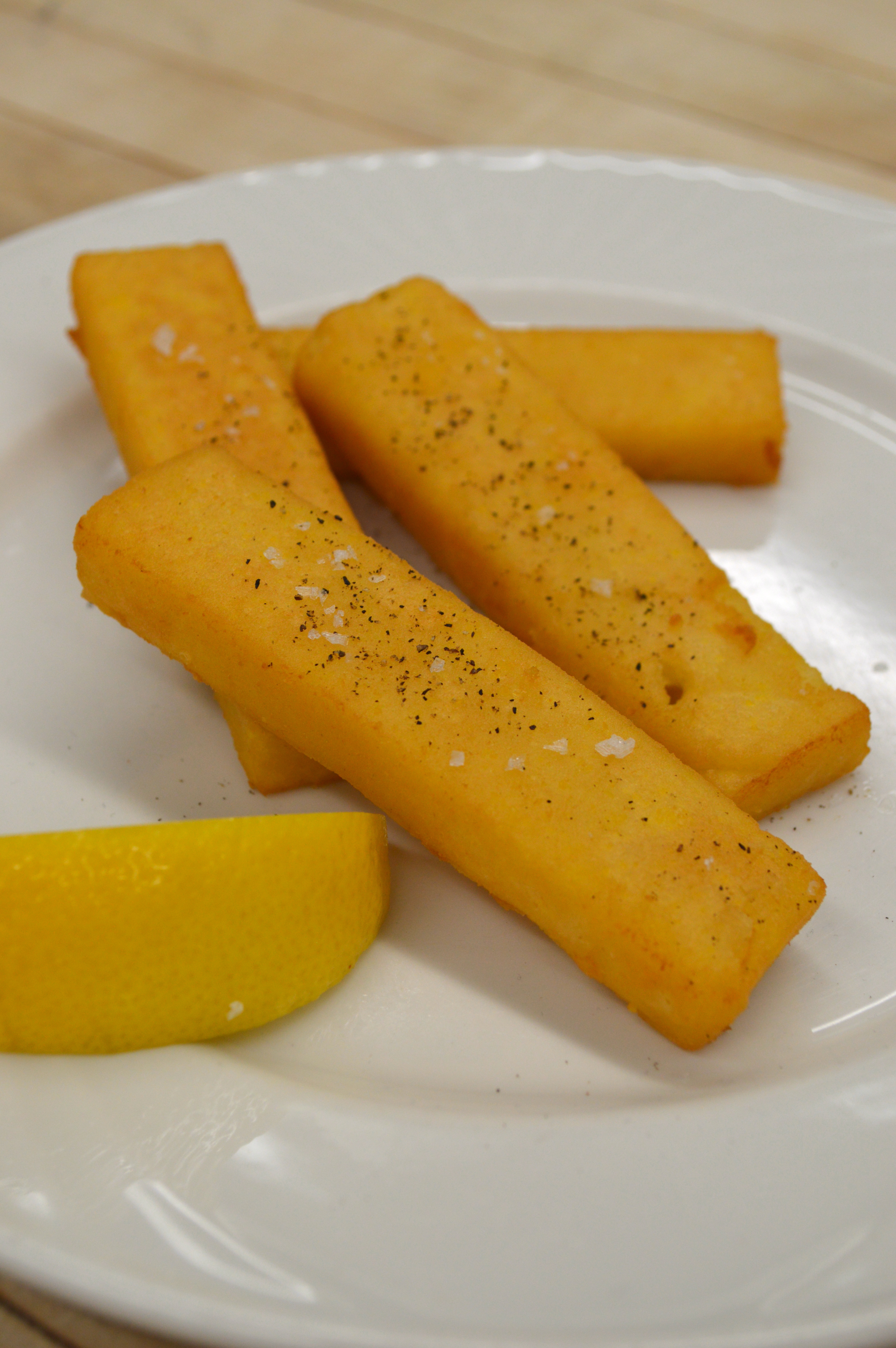
While not a full-fledged fad, I’ve seen plenty of chickpea flour fritters on restaurant menus the last few years. From the panelle di ceci at Uccellino, to the chickpea fries at Canteen, to the panissa at Teatro, chickpea flour fritters are a gluten-free and vegan-friendly starch with great textures. My own introduction to this kind of preparation was the Provencal version called panisse.
At its simplest panisse is water, chickpea flour, and a bit of olive oil, cooked in a pot into a thick porridge that is then spread into a pan, chilled, sliced, and fried. It is very much like polenta fritta, only made with chickpea flour instead of cornmeal. One interesting difference is that most traditional polenta recipes stream the raw cornmeal into hot broth while whisking, whereas most panisse recipes whisk the chickpea flour into cold water and then bring the mixture to a boil. I’m not sure why this is. Perhaps the finely ground chickpea flour would be prone to clumping if added to hot liquid?
Even though it is usually eaten on its own as a snack, I was keen to put panisse on a menu alongside lamb.
My recipe takes the water to chickpea flour ratio from this recipe by David Lebovitz. There is lots of opportunity for variation. You could add onion or herbs, use wine or stock as the liquid, or even add grated cheese as you would for polenta. I kept mine relatively simple, adding garlic for flavour and a bit of cornmeal for texture. And I kept it vegan. Even though I served it with lamb, it was handy to have a vegan and gluten-free starch at the ready.
Panisse
Ingredients
- 325 g chickpea flour
- 75 g cornmeal
- 4 tsp olive oil
- 2 cloves garlic, minced with a microplane
- 1 tbsp kosher salt
- 1.5 L water, divided
- extra olive oil for frying
Procedure
- Lightly grease a 2″ half hotel pan with olive oil.
- Put chickpea flour, cornmeal, olive oil, garlic, and salt in a pot. Add half the water and use a whisk to mix until very smooth. Make sure there are no dry clumps in the mix.
- Add the remaining water. Transfer the pot to the stove and bring th mixture to a boil, then reduce heat to medium and stir constantly.
- Taste and adjust seasoning as required.
- Pour hot mixture into the greased hotel pan. Working quickly while mixture is still very hot, use a palette knife to smooth the top surface. Once as smooth as possible, put plastic wrap directly onto the surface of hte panisse to prevent drying. Transfer pan to cooler and let chill thoroughly.
- Once chilled, invert the hotel pan over a cutting board to release the panisse.
- Trim the rounded edges so the panisse is a perfect square. Cut to desired shapes.
To Serve
- Put olive oil in a heavy pan and put over medium-high heat.
- Once oil is hot, add panisse. Fry until deep golden brown.
- Flip panisse and fry on second side until golden brown.
Even though it’s redundant, I called it “chickpea panisse” on the menu as most folks here are not familiar with the preparation. Adding “chickpea” at least gives them the idea that it’s a starch.